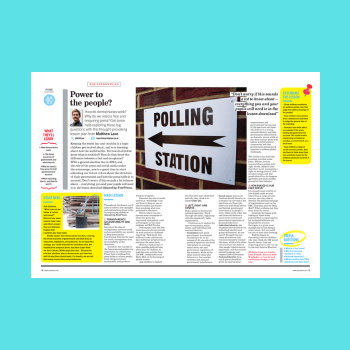Zipped file containing 2 PDFs and a PowerPoint slideshow
KS2
Years 3-6
How do democracies work? Why do we need a free and enquiring press? Get some help exploring these big questions with this thought-provoking KS2 democracy lesson plan from Matthew Lane…
Keeping the world fair and truthful is a topic children get excited about, and so is learning about how the world works.
Yet how do children know what is truthful? How do they know the difference between a fact and an opinion?
With a general election due in 2024, and the role of the press and social media under the microscope, now is a great time to start educating our future voters about the structure of their government and how the press holds it to account. Don’t worry if this sounds a lot to know about – everything you and your pupils will need is included.
KS2 democracy learning objectives
- How democracies work
- The three branches of government and what they do
- Why we need a free press to hold government to account
- What reporting bias is, and how to spot it
Democracy starter activity
Ask students, “What rules do we follow at school and home?”. Discuss how some people make rules and others ensure they are followed. Explain that countries also have rules.
Briefly explain how democracies function, covering the three branches of government and what they do (executive, legislature, and judiciary).
As an imperfect analogy, you could relate this to lunchtime rules: the headteacher proposes them; teachers shape them for their classes; MSAs apply the rules.
Discuss the role elections play in democracies and how free and fair elections should work. For brevity, we are not discussing monarchies and presidencies.
Matthew Lane is an author and teacher from Norfolk. His book Wayfinder: leading curriculum vision into reality is out now. Find out more about Matthew’s work at theteachinglane.co.uk and follow him on X at @MrMJLane.














